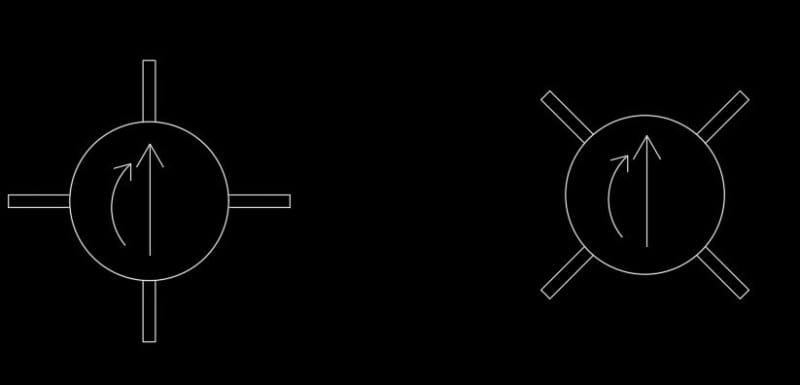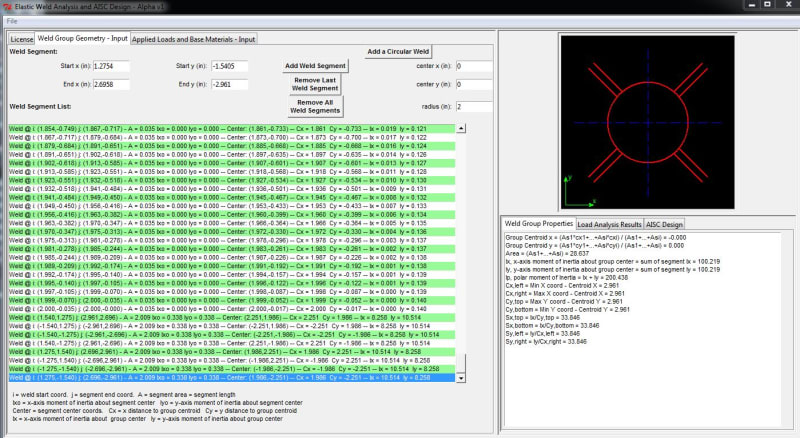I have been doing weld design per Blodgett's "Design of Welded Structures" and I had a question regarding how to find the Section modulus of the example on page 7.4-14 that involves a pole with a base plate and 4 gusset plates. I looked at my shear and moment acting in the x-axis or y-axis so the section modulus calculated in the example is the same as what I wanted to do. However, when I rotate the loading 45 degrees (now acting between the gussets), I am at a loss for how to find the section modulus. See the photo for what I am talking about.

For the case where the loading is acting on the gusset (Left), finding 'I' is broken into two parts. I=(d^3-d1^3)/6 for the gussets, and I=(pi*d1^3)/8 for the pole/base weld line. Sum them up and divide by d/2 to get section modulus (S). 'd' is out diameter and 'd1' is inner diameter.
I do not understand how to find the I's for a rotated case.

For the case where the loading is acting on the gusset (Left), finding 'I' is broken into two parts. I=(d^3-d1^3)/6 for the gussets, and I=(pi*d1^3)/8 for the pole/base weld line. Sum them up and divide by d/2 to get section modulus (S). 'd' is out diameter and 'd1' is inner diameter.
I do not understand how to find the I's for a rotated case.


